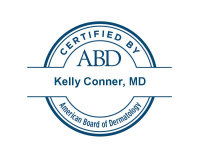Skin Conditions & Treatments > Actinic keratosis
Dermatology A-Z
Actinic keratoses are small briar-like lesions that arise on sun exposed areas of the skin. They are a precursor lesion to squamous cell carcinoma, a common skin cancer caused by cumulative sun exposure. I like to consider them "baby" or "teenage" skin cancers. They might not be cancer now but they certainly are "thinking" about making the change to full blown skin cancer. This process usually takes many years, anywhere from 5-10 years if they are left unchecked.
There are several methods for treatment we offer at Cinco Ranch Dermatology. The most common method is freezing with liquid nitrogen. Your dermatologist will carefully feel your sun-exposed skin with their fingers and wait for the feeling of the small papule. This is where the skin cells are growing more rapidly and thus are piling on top of each other. It is frequently felt better than seen, hence the careful examination required to find them. At this point, we apply the liquid nitrogen, a very cold spray, that kills those atypical skin cells. We also offer field treatments for an entire area such as the arms, face, and scalp with chemical peels, light therapy (photodynamic therapy), and sometimes prescription topical chemotherapy. Sometimes, if a lesion is large enough, a biopsy may be required to determine if it has progressed to a squamous cell carcinoma. You dermatologist at Cinco Ranch Dermatology can help you find the best treatment for your particular amount of sun damage and actinic keratoses burden.
You can prevent actinic keratoses by wearing sunscreen, sitting in the shade, wearing sun protective clothing, and visiting your dermatologist for skin checks. If a lesion seems to not be responding to treatment or is particularly large or growing, come in as soon as possible for an evaluation. In the picture below, the large volcano-like lesion is a squamous cell carcinoma. The smaller more subtle crusty areas are the actinic keratoses.
Click on the links below for more information:









